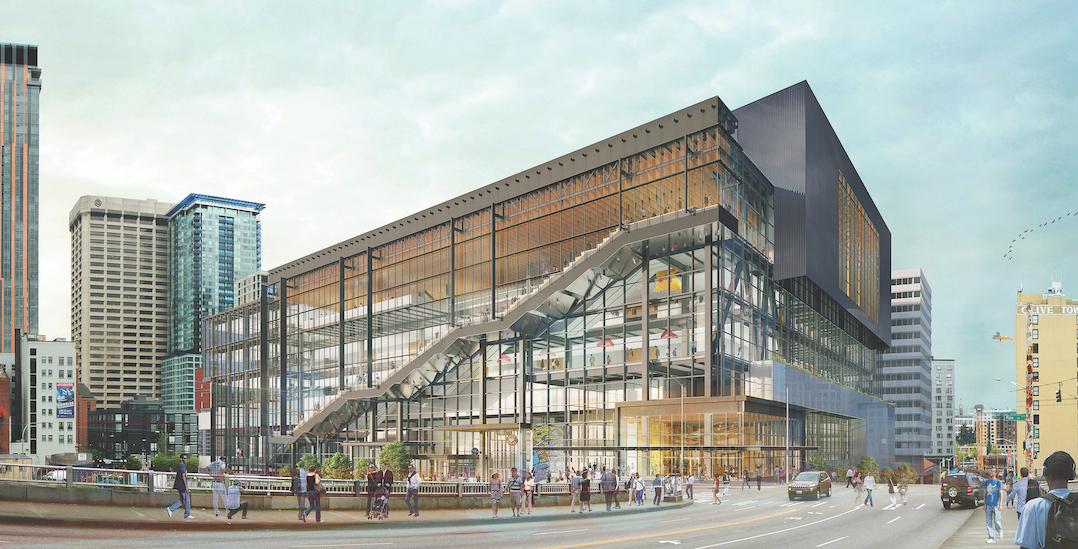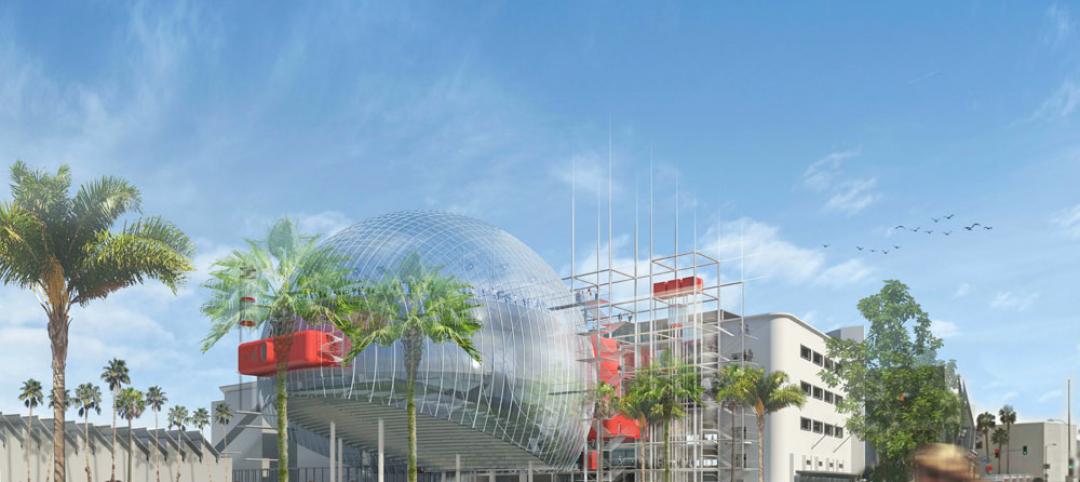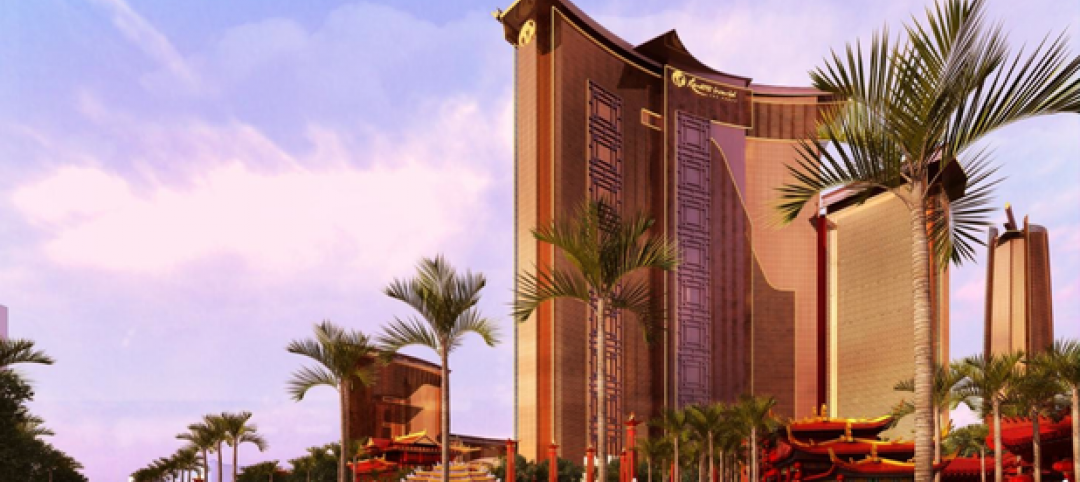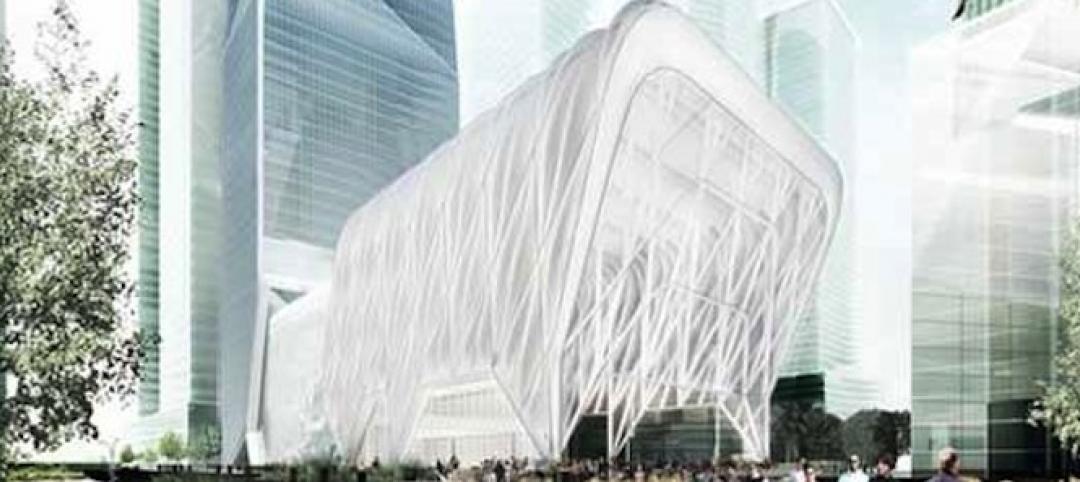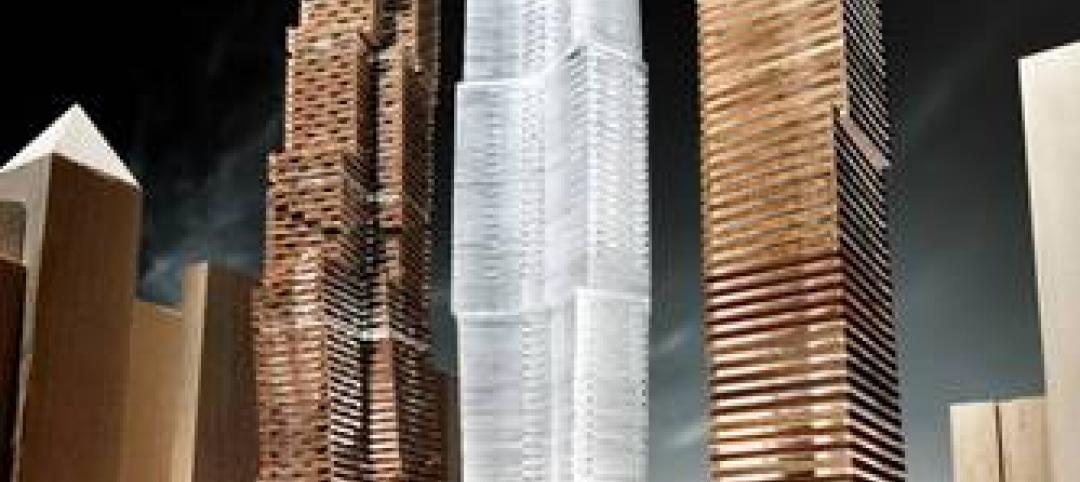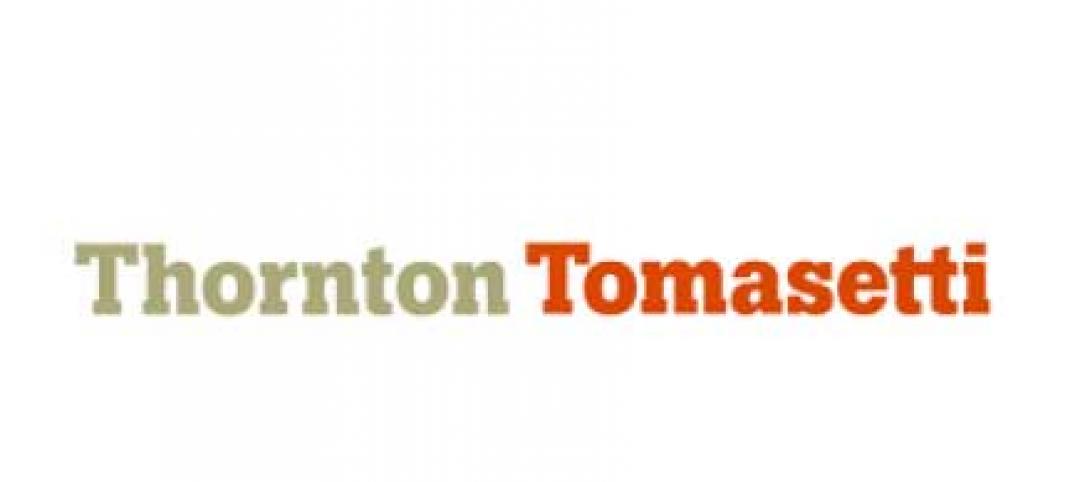“No more black boxes!” That’s how Mark Schwettmann, AIA, of Skidmore, Owings & Merrill, summarizes one of the trends influencing recent convention center construction and renovation.
Schwettmann managed his firm’s architectural work on the newly completed $551 million, 244,914-sf addition to San Francisco’s Moscone Center. His shorthand signifies that clients want these massive event spaces, which in the past have tended to isolate conventioneers, to bring more of their surrounding environments to attendees and exhibitors.
“Convention centers serve, in a way, as ambassadors for their cities,” says Dewey Newton, a Vice President who leads Turner Construction’s Convention Center and Sports facility work. “Cities across the United States are taking steps to upgrade facilities with a new look, install enhanced technologies, and provide enhanced comfort and services.”
Related content: Top 30 Convention Center Architecture Firms
Related content: Top 30 Convention Center Engineering Firms
Related content: Top 10 Convention Center Contractors Firms
Turner is working on two huge projects: the $1.5 billion expansion of Jacob Javits Center in New York that’s adding 90,000 sf of exhibit space, 45,000 sf of meeting rooms, a 55,000-sf ballroom, and 27 loading docks (with Lendlease Construction, LMB, and tvsdesign); and the 1.4 million-sf, $860 million expansion of the Las Vegas Convention Center (with Martin-Harris).
Schwettmann says that designers and owner-operators are paying more attention to providing the complete user experience. That includes bringing more natural light into exhibit halls and meeting rooms. For example, as part of its 500,000-sf renovation and expansion of the Miami Beach Convention Center, Clark Construction installed 200,000 sf of new curtain wall, says Katie Twomey, Clark’s Senior Vice President.
Owner-operators and their AEC partners are concentrating on the three As: accessibility, adaptability, and authenticity, say Leo da Costa and Brian Tennyson, Principals with the Seattle office of LMN Architects. They note that one of the “must haves” in convention centers these days is a wide range of informal “touchdown” spaces that allow delegates to interact in unstructured formats.
Twomey also sees a greater emphasis on creating social spaces for impromptu meetings. One of her firm’s projects is the 1.5 million-sf addition to Washington State Convention Center, in Seattle, that will feature an eight-story glass-enclosed vertical circulation area known as “the hill climb,” which cantilevers over the sidewalk. It will have an escalator, but also an architectural stair with wood platforms and seating areas at each level, where conventioneers can take a break, charge their phones, or have casual meetings or conversations.
Flexibility is crucial for convention centers
SOM’s Schwettmann says there’s high demand for more smaller meeting rooms with state-of-the-art AV and catering. Prefunction spaces now require infrastructure and amenities that take them beyond their traditional roles for registration, circulation, and decompression between sessions, say Randall Buescher, AIA, and Paul Sanderson, AIA, Senior Vice President and Senior Project Manager with the design and construction firm Epstein, both of whom worked on the Javits project.
They note that these spaces must be equally equipped to serve as “flexpo” areas that extend the show floor into the public area, breakout space for informal gatherings, and “oases” with business-center-like amenities.
Buescher and Sanderson add that technology abets flexibility in such areas as digital displays, motorized banner systems, operable partitions, and dock management, where software “has revolutionized the capabilities of venue’s freight operations, logistics, and move-in/move out” functionality, they say.
Authenticity can be defined by everything from design finishes and pop-up shops to a convention center’s food choices. One of HOK’s recent projects, the $207 million redevelopment and expansion of the Kentucky International Convention Center, in Louisville, installed an in-house catering company with a fully equipped kitchen that can serve both quality global fare or local cuisine to appeal to a wider cross-section of attendees, says Peter Ruggiero, AIA, a Design Principal at HOK’s Chicago office.
AEC professionals interviewed for this article agree that ballrooms play a seminal role in a convention center’s business model. The Louisville center has 200,125 sf of exhibit space, 52 meeting rooms, and a 40,000-sf ballroom that can accommodate up to 15,000 meals a day. The Miami Beach Convention Center expansion includes a 60,000-sf ballroom. Hoar Construction and architect HHPC are adding 25,000 sf of ballroom space and 35,000 sf of prefunction space to the convention center in the Hyatt Grand Cypress in Orange County, Fla.
“Ballrooms are being designed to be used as meeting rooms or exhibition halls,” according to Dale Koger and Gary Birdsall, Vice Presidents with PCL Construction. Ballroom and exhibit hall design allows for the subdivision of these spaces, too, “enabling convention centers to generate more revenue and attract different/larger shows.”
“Today, convention centers need to be smart by offering new amenities and enhanced technologies that can be customized for each show or exhibit,” according to Koger and Birdsall.
Subdividing halls and meeting rooms seems to be simply a matter of dealing with scale, because there’s no getting around the fact that convention centers are getting bigger. Turner Construction’s Newton says that clients are seeking exhibit halls with clear spans up to 40 feet high to accommodate multistory displays. Clients are also demanding more column-free space, supported by enhanced WiFi and DAS networks.
It’s a balancing act to expand convention centers without overwhelming their surrounding neighborhoods. In the redesign of the Kentucky International Convention Center, the building was repositioned to be part of the urban fabric and connect with local streets and businesses, says HOK’s Ruggiero.
Convention centers go vertical
In some cases, these buildings are going vertical, such as the 13-story Washington State Convention Center. LMN Architects’ da Costa and Tennyson point out that more urban-centric convention centers are shifting toward a “campus” approach, either using existing event spaces near convention centers or building discrete modules that can host multiple concurrent events.
Renovations and additions currently outpace new construction. The increasing size and scale of convention centers reflect their importance as economic engines for their communities. Even before its expansion, Moscone Center generated 20% of San Francisco’s 16.9 million annual visitors. And one of the main reasons behind the Miami Beach Convention Center expansion was to accommodate Art Basel, the world’s largest art fair, says Twomey.
“These buildings are real drivers of local and regional economies,” says SOM’s Schwettmann. “And they have the possibility for being countercyclical.”
Epstein’s Buescher and Sanderson contend that municipalities and venue operators are drawn to renovations of existing convention centers “more than ever,” despite the challenges presented by improving and expanding buildings that also happen to be open for events.
Epstein and PCL Construction see more evidence of dedicated hospitality venues being part of convention centers’ expansion. This is true of even small centers like the recently opened 44,000-sf Harlingen (Texas) Convention Center, to which its developer, BC Lynd Hospitality, attached a new $25 million five-story hotel.
The 415,000-sf expansion of Broward County Convention Center in Fort Lauderdale, Fla., which entered its design phase in May, will include the addition of an 800-key Headquarters Hotel with more than 73,000 sf of meeting space.
PCL’s Koger and Birdsall agree: “It’s a very exciting time to be part of the industry.”
MORE FROM BD+C'S 2019 GIANTS 300 REPORT
Related Stories
| Apr 17, 2013
First look: Renzo Piano's glass-domed motion pictures museum
The Academy of Motion Picture Arts and Sciences last week released preliminary plans for its $300 million Academy of Motion Picture Arts and Sciences museum in Los Angeles, designed by Renzo Piano and local architect Zoltan Pali.
| Apr 2, 2013
6 lobby design tips
If you do hotels, schools, student unions, office buildings, performing arts centers, transportation facilities, or any structure with a lobby, here are six principles from healthcare lobby design that make for happier users—and more satisfied owners.
| Mar 22, 2013
8 cool cultural projects in the works
A soaring opera center in Hong Kong and a multi-tower music center in Calgary are among the latest cultural projects.
| Mar 7, 2013
Vegas rebound: Genting Group acquires assets of stalled Vegas casino-resort
International hospitality giant Genting Group has announced a deal with Boyd Gaming Corp. to purchase the land and assets, including partially built structures, of the stalled Echelon casino-resort in Las Vegas.
| Feb 25, 2013
10 U.S. cities with the best urban forests
Charlotte, Denver, and Milwaukee are among 10 U.S. cities ranked recently by the conservation organization American Forests for having quality urban forest programs.
| Feb 22, 2013
Detroit project would bring 'fairytale forest' to riverfront
A proposal by atelierWHY to create a heavily wooded park on the downtown riverfront has taken first place in the juried Detroit By Design competition.
| Feb 19, 2013
'Pop-up' proposal would create movable cultural venue for NYC
The Culture Shed, a proposed 170,000-sf project for New York City's Hudson Yards development, could be the ultimate in "pop-up" facilities.
| Feb 14, 2013
Brasfield & Gorrie breaks ground on New College Football Hall of Fame in Atlanta
General contractor Brasfield & Gorrie is scheduled to kick off construction on the new College Football Hall of Fame in downtown Atlanta. With an anticipated completion date of fall 2014, the $66.5 million project will continue the revitalization of the city’s tourist district.
| Oct 2, 2012
Mirvish and Gehry unveil conceptual design to transform Toronto’s entertainment district
Reimagining of King Street Entertainment District supports Toronto’s cultural corridor.
| Jun 25, 2012
Thornton Tomasetti appoints Hofmeister and Zhu to board of directors
The addition of Hofmeister and Zhu brings the number of directors to 10.


